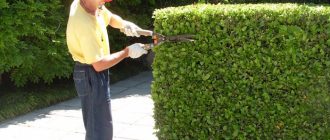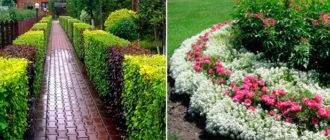Evergreen trees and shrubs are slow growth and high cost, but their endurance and year-round sophistication won love among the inhabitants of our country, and many other regions.
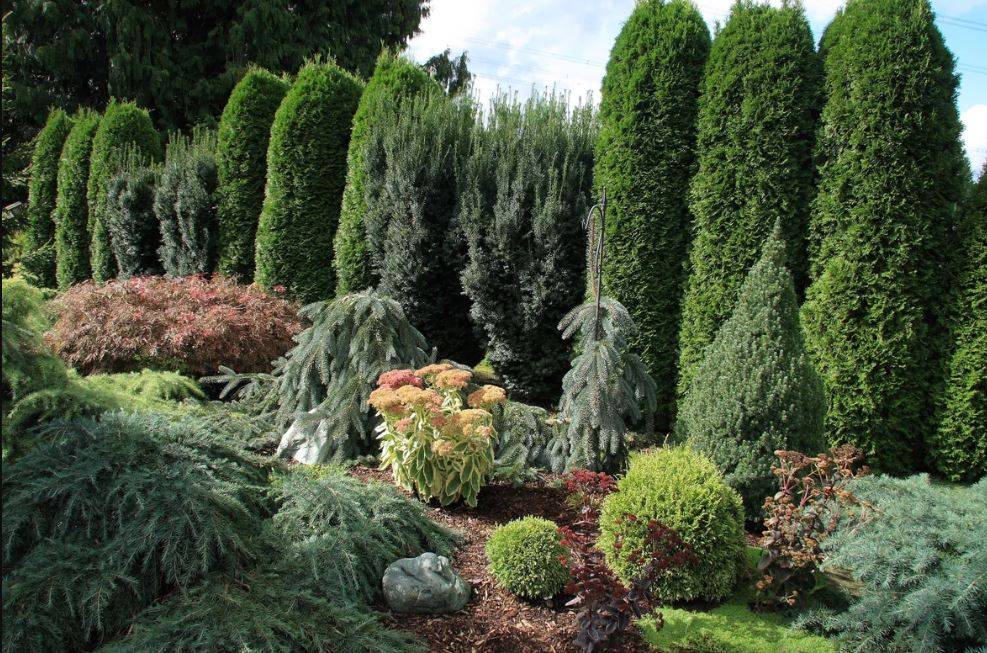
Conifers as hedges
Among the most common are the following.
Spruce prickly
It grows rather slowly, but a mature tree forms a thorny and dense fence. Its undoubted advantage is that it grows absolutely calmly in conditions of increased gas pollution, which makes it indispensable for planting in urban conditions. It is also called blue or silver. It is worth planting trees at a distance of about 1 meter from each other. Feels good after cutting.
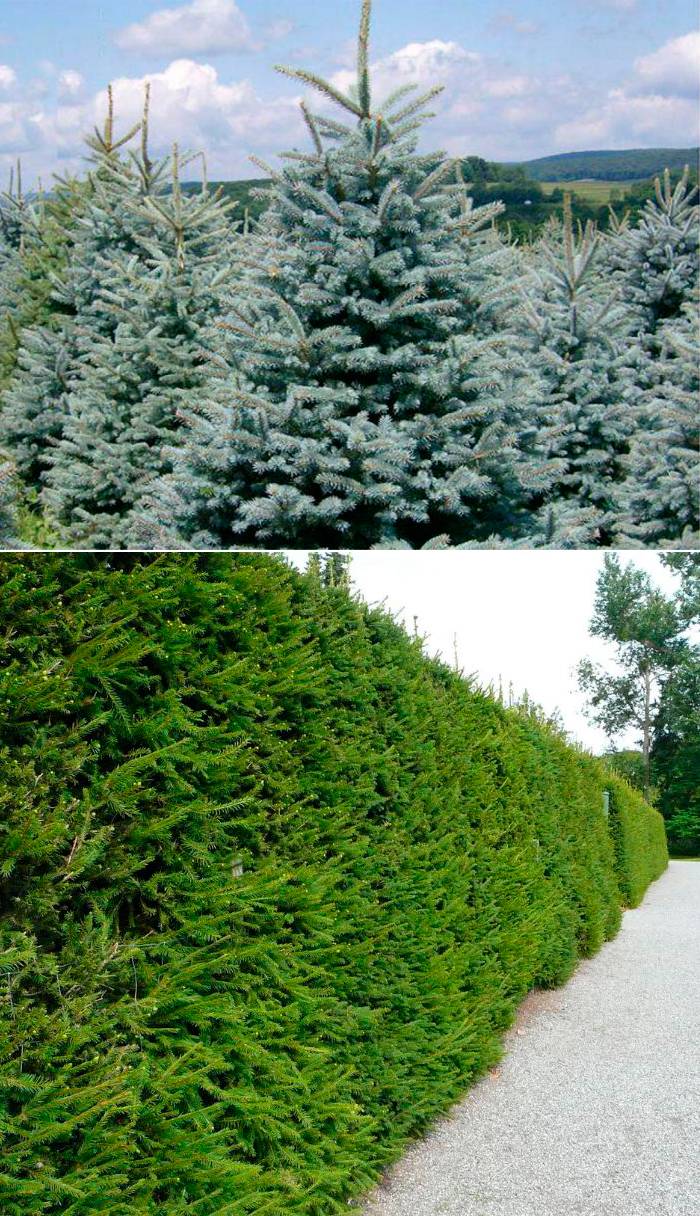
Norway spruce
After planting, it grows rather slowly for 10 years, so young trees form a barrier that is impenetrable for humans and animals. Even at the very ground, its crown is extremely dense. It can be planted 40 cm apart between plants. Perfectly tolerates a haircut.
Conical gray spruce
It is a dwarf plant reaching a maximum height of 6 m in adulthood. He has a dense pyramidal shape, and therefore practically does not require a haircut. Very prickly, it is recommended to plant seedlings 1 meter apart.
He does not like smoke and bright spring sun, despite his love for sunlight in general.
Has increased drought tolerance.

Mountain pine
Best for free-growing hedges and curbs. It makes no sense to cut it, since this does not lead to an increase in the number of branches.
It tolerates drought and unfavorable city conditions well.
There are no preferences in the choice of soil, it grows on any, but rather slowly. It is recommended to plant seedlings at a distance of 0.5 m from each other.
Yew berry
Since ancient times, this plant has fallen in love with people who are engaged in topiary, because it lends itself perfectly to a haircut and takes any shape that is given to it. There are a large number of varieties of this tree, making it suitable for different purposes in the design of the site. For example, single-row curbs, hedges and even entire walls. To form the latter, tall subspecies are planted, which have a pyramidal crown and practically do not require a haircut.
It is characterized by extremely slow growth: in 3 years it can grow by only 2-3 cm. But at the same time it is extremely durable, it can grow for centuries.
It tolerates dusty and gas-polluted air well, which makes it suitable for urban conditions. The only disease threatening the tree is root rot, the rest are not terrible.
During the period of fruit appearance (from about August to November) it has a very beautiful decorative appearance.
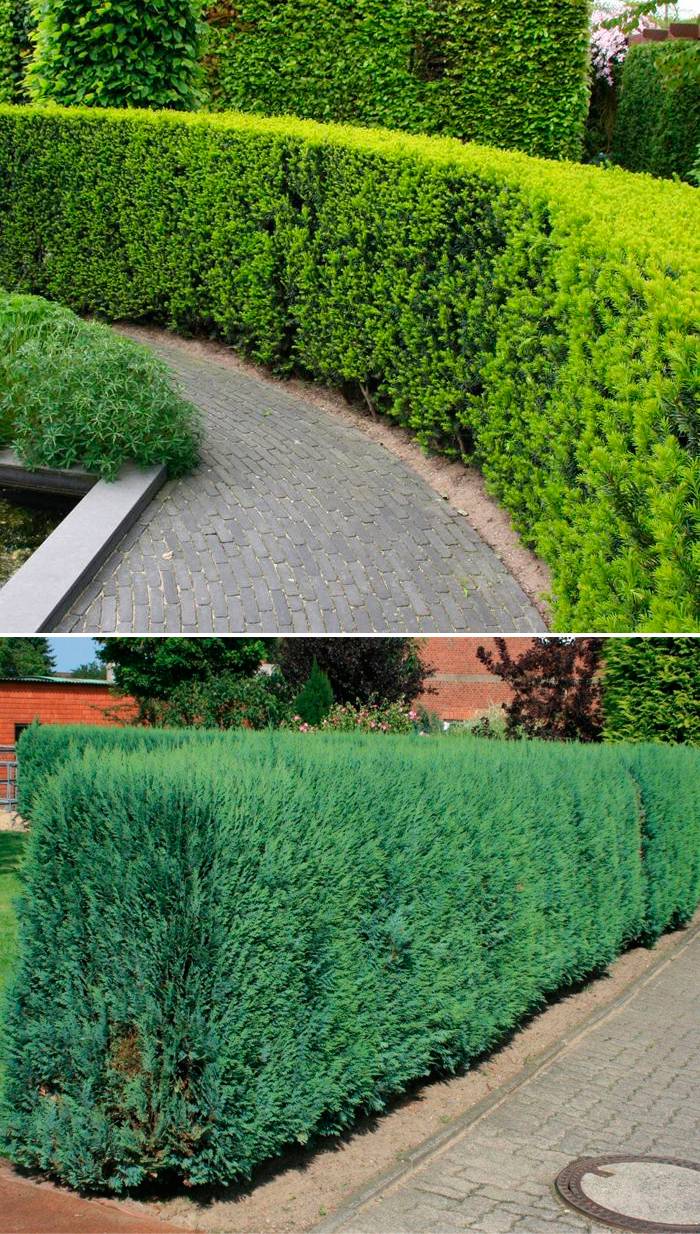
Cypress
There is a wide variety of subspecies with different crown shapes and foliage colors, thanks to which it has gained immense popularity in European countries and Russia. Due to the fact that it easily tolerates a haircut, hedges and walls can be given intricate and bizarre shapes.
The first 5 years after planting is characterized by slow growth, later it accelerates significantly.
It often sprouts numerous roots from the root. Therefore, you do not have to buy new plants, it is enough to carefully dig them up and transplant them to the right place.
It tolerates dust and gas pollution normally, so it can be planted within the city. Patient for a slight drought. Grows on low-fertility soil. Possesses high resistance to many pests and diseases.
Thuja
Very popular for creating evergreen hedges and fences.
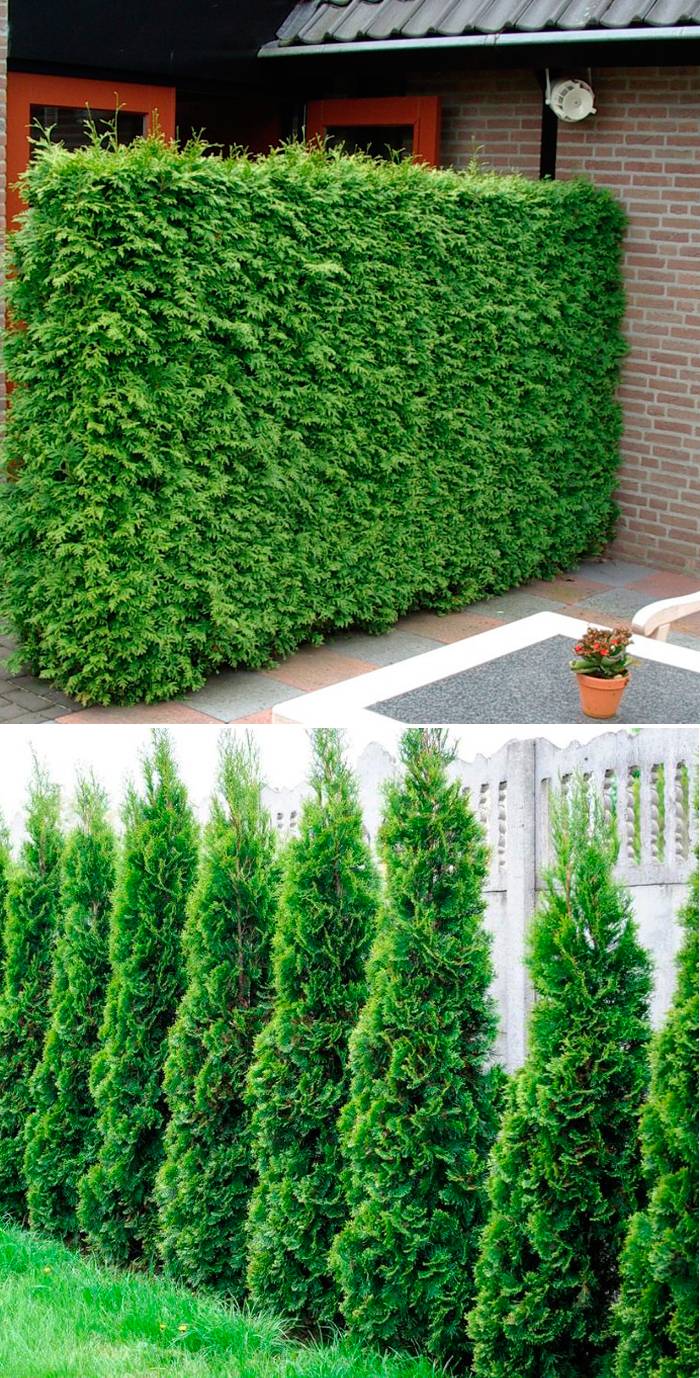
The best qualities suitable for this are 2 varieties:
- Brabant. This is a type of western thuja.It grows very quickly, up to 30-50 cm in 1 year. Resistant to cold and dry weather. The crown has a conical shape. It can reach a height of 2 meters. It does not require special care, but it is better to cover young trees in winter, especially in areas with cold winters. To give the most decorative look, it is recommended to cut the plant 2 times a year: in spring and autumn.
- Emerald. Crown in the form of a column. It grows rapidly, 20 cm per year. It tolerates cold well, but with heavy snowfalls, it is necessary to clear the crown of snow, since it does not like snowdrifts. It is preferable to plant in early spring or autumn in pre-prepared soil (it is important to add fertilizers, preferably mineral). The distance between the plants should be from 50 to 70 cm, this is optimal, so they will not interfere with each other, but will create an impassable wall due to the large number of side shoots.
Juniper
Its distinguishing feature in comparison with other evergreens is that it prefers shade to the sun. There are several subspecies of the plant, so the spreading one is good for decorating curbs and low hedges, and the cone-shaped one for higher barriers. It is important to plant both male and female plants. They differ in the width of the crown: the female is much wider. Bears fruit for 2-3 years after planting.
It is recommended to plant the plants in a checkerboard pattern with a distance of about 50-60 cm. It tolerates drought well, but for the best plant appearance it is worth watering once every 7-10 days.
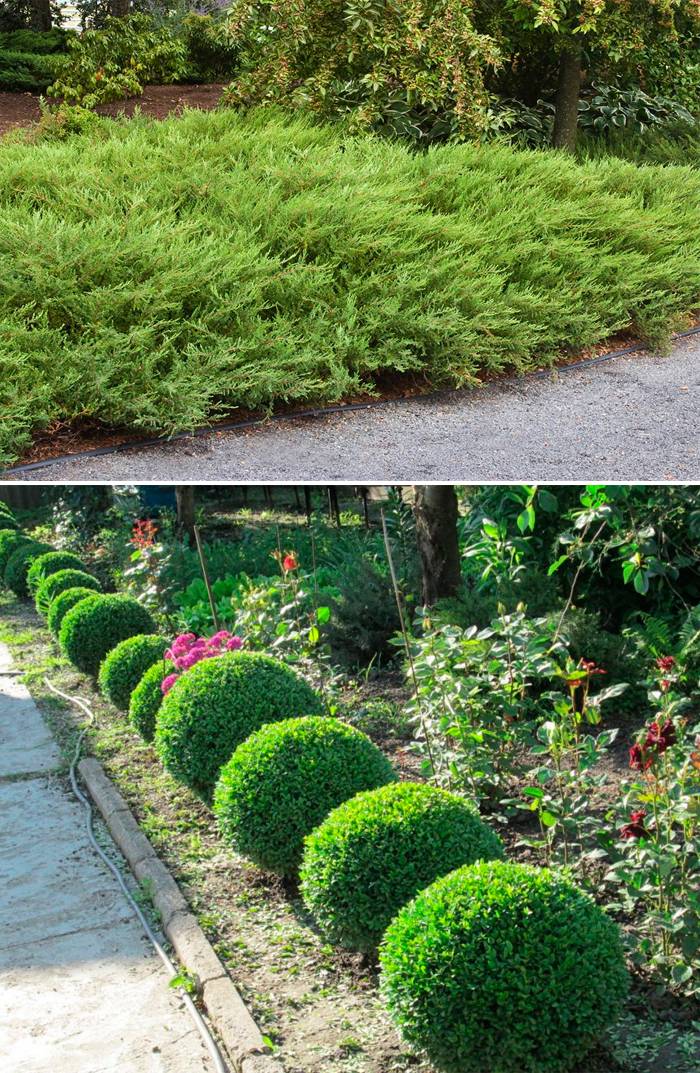
Green shrubs
Evergreen deciduous shrubs are also good for creating a dense evergreen wall.
There are many varieties used for these purposes (cotoneaster, holly holly, mahonia holly, Fortune's euonymus, bamboo, fern), but one of them has won the most popularity.
Boxwood
Its foliage is very small and glossy, the crown is dense. From boxwood, fences with the correct geometric shape are easily obtained.
It is extremely unpretentious to the acidity and fertility of the soil, the intensity of lighting and the regularity of watering.
General pruning is carried out in the spring and autumn, but as lateral shoots grow, which spoil the appearance, they are also removed at regular intervals of 5-6 weeks. The plant can be bred independently - it is enough to cut off a branch and plant it, but it grows extremely slowly.
The disadvantages of the shrub include:
- Loves warmth very much. In conditions with a cold climate, it is important to cover the bushes for the winter, otherwise they will freeze and die, and if there is a lack of heat, they will not grow high.
- Poisonous. Moreover, this applies to both foliage and shoots. In this connection, it is not recommended for planting in families with small children and pets, as they can be poisoned.
It is better to plant it at intervals of 50-60 cm. Depending on the region, it can be high enough and suitable for living fences, and not just hedges.
Which plant to choose for planting as a curb or fence, everyone decides for himself. But thanks to the unpretentiousness of all of the above, even a novice amateur gardener can cope with growing. And thanks to the ability to easily endure pruning, such shrubs and trees will allow fantasies to play out and bring any ideas to life.
If you are tired of the sight of only green plants, there are options for flowering evergreen vines and shrubs that diversify the appearance of the hedge.

